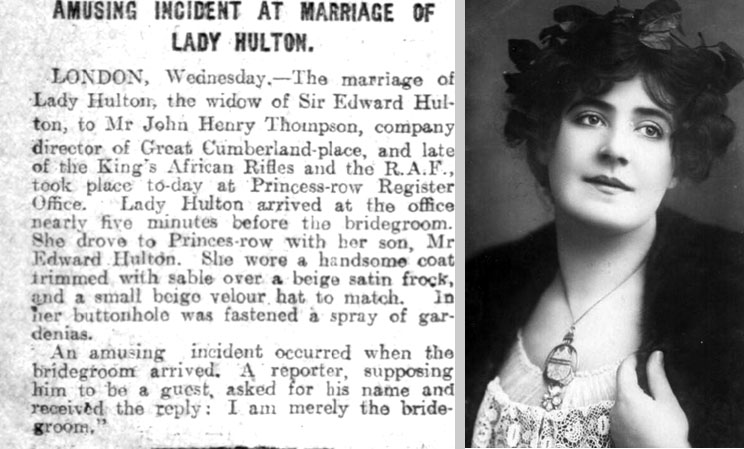Shortly before 10.00 on the morning of October 15th, 1919, a tall, looming figure clad in 14 foot chains walked up to Number 10 Downing Street and handed in a petition to the Prime Minister, David Lloyd George asking for work on behalf of the demobilized soldiers of Birmingham. The chains, which were of various weight and thickness, were wound grimly around his neck, arms, legs and ankles. After being photographed the man departed as mysteriously as he had come. The man was discharged soldier, Arthur Henry Wagstaff, former Gunner of the Royal Garrison Artillery, No.8 Siege Battery. He told a Downing Street representative that he had been in the R.G.A for four years and had once been wounded in action. On approaching the door of Number 10, and with a crowd of little more than ten bystanders around him, he read from a letter he gripped in his hand:
“I approach you, bondaged and chained as you see me, as a lover of liberty. What do you, personally, think of the picture? I have adopted this scheme to attract public attention to the ill-treatment and brutality administered to the men of my class who made sacrifices in the interests of the country. They thought it was for democracy, instead of which they now find they have been shedding their blood in the interests of the most scandalous and greedy profiteers the world has ever known. We approach you, sir, as the Goliath of the Capitalists, seeing as we do, the country in a state of chaos, and the men who made this great sacrifice in a state of starvation, and want, with no houses to occupy, no work, and their wives and families dependent.”
After delivering his speech, Wagstaff embarked a nationwide tour of Britain, stopping at Newcastle, Mansfield, Nottingham, Rotherham, Sheffield, Doncaster, Leeds, Edinburgh, Paisley and Glasgow.
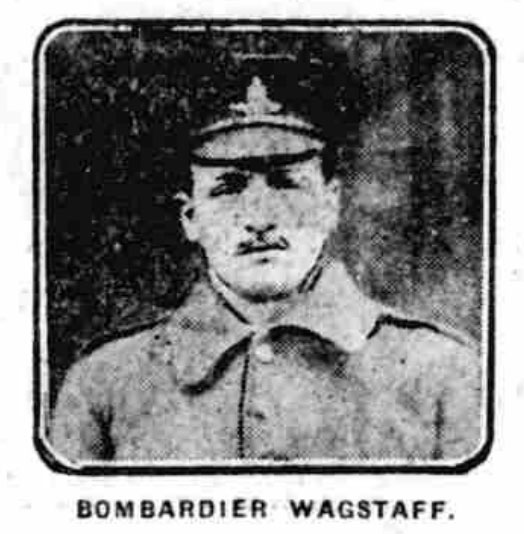
On each occasion his demands were simple: extra gratuities for all ex-servicemen, fuller pensions for the disabled, immediate discharge for individuals convicted of mutinous offences during the war and the immediate termination of migrant labour. The man said he wanted what Lloyd George had promised: a land that was fit for heroes.
The burly, six-foot Wagstaff made the entire journey on foot. On arrival in the towns and villages the service-issue boots would come off and he would proceed valiantly barefoot. It was a carefully managed spectacle. A ‘way of sorrows’ for the common man, stoked with religious imagery and heaped with social injustice.
On his scheduled return to London the following year he explained at another gathering that he hoped to lead a procession of 4,000 ex-servicemen to the gates of Buckingham Palace and demand an audience with the King.
But whilst Wagstaff claimed to be independent, a man driven by his convictions and beset by a spontaneous desire to protest with a passion of almost biblical proportions, the timing of his mission and the language that he used suggests a cleverly conceived publicity stunt with expert, political timing. Wagstaff was a man not totally unfamiliar with stagecraft and the 10 Sherwood Street apartment that he used to launch his mission that day was shared with actors’ union veteran, Eric H. Albury. Among Albury’s friends were The Clarion’s Arthur Rose and Socialist Revolutionary-turned ‘Soldier’s Friend’, Victor Grayson MP, who vanished without trace some 12 months later.
At the time of the stunt, Britain was facing a crisis of truly epic proportions. Millions of men in Britain and throughout the British Empire were enduring the chronically protracted process of being discharged from military service. Yet despite hostilities coming to an end in November 1918, the lengthy procedures of state bureaucracy and a fresh demand for troops in Russia made the demobbing process agonizingly slow. Even on their return, men were not only confronted by large-scale unemployment, they also faced the prospect of drifting into the ranks of various ex-servicemen unions whose motives and objectives were served by politics rather than outreach. And during a period of unparalleled social upheaval, influenced in no small part by events in Russia, the long-feared threat of Social Revolution was becoming a grim reality. The ‘steady resumption of industry’ envisaged by Lord Milner and Lord Derby was giving way to an explosive prorogation; paradise wasn’t being regained for the country, it was being postponed. Demobilisation was exacerbating social and industrial tensions that were already threatening to blow (National Archives Catalogues CAB 27/41-42, RECO 1/858).
Military trade unions like John Becket’s National Union of Ex-Service Men and the Sailors, Soldiers and Airmen’s Union were among a handful of organisations seeking political capital from prevailing tensions. The NUX, as it became known, was kept under close surveillance by the newly reorganized Mi5; there were fears among industry behemoths that the unashamedly Left-wing union was promoting sedition and revolution among serving and recently demobilized troops. A more militant international offshoot, the International Union of Ex-Servicemen (I.U.X) was formed in Glasgow in 1919. In an effort to steer recently demobbed men away from more extreme and politically-charged groups like the NUX and IUX, Conservative Party MP Wilfrid Ashley (also secretary of the Anti-Socialist Union) launched Comrades of the Great War, which was duly presented as a non-partisan, cross-political association whose single purpose to protect the rights of former soldiers and bring them together in a spirit of fellowship and mutual support. In actual fact, the organisation was ostensibly formed and managed to provide a military column against Anarchism and Bolshevism during a period in British history that was never more vulnerable to revolution.
In February 1920 Wagstaff took his ‘Man in Chains’ drama to Paisley. It was here at an election rally at the Clark Town Hall, that he launched his biggest gamble to date; heckling former Prime Minister, H.H Asquith in front of a packed-out women’s meeting consisting almost entirely of grieving mothers. Still bound in chains, Wagstaff repeated the demands of the people: better pensions for injured service-men, the release of all ‘political prisoners’ and the immediate suspension of migrant labour. This time Wagstaff also bore a placard with the inscription, ‘This is what the Liberal Government has done for Tommies. Vote for Biggar!’ The timing was as cunning as ever. Asquith, in one final throw of the dice to topple his rival Lloyd George as Liberal leader, was contesting Paisley in an emergency by-election, focused almost entirely on coalition and anti-coalition dialogues between rival Liberal factions. All Labour and the Co-operative Party had to do was exploit it.
After a tense and belligerent exchange with Asquith, Wagstaff was removed by officers. A warrant for his arrest had been issued by courts in England; it seems that Wagstaff’s five-month campaign to feed and mend the broken Tommy had meant neglecting his duties at home; he had failed to maintain his family. His wife explained that despite his rousing demands for employment, Wagstaff had never done a day’s work in his life. In May 1920, magistrates in Manchester sentenced him to 49 days imprisonment. His mission in chains continued for some seven more years before eventually fizzling out.
But it’s the 10 Sherwood Street address that Wagstaff shared in London with actor and activist, Eric H. Albury that makes me wonder if our manacled crusader was more the product of propaganda than spontaneous, grass-roots protest. Did others have a hand in his ‘artistic development’? If so, there is really two ways of looking at it; on the one hand his act could have been high-profile stunt conceived by groups or individuals looking to foment unrest, and on the other, the work of covert intelligence agencies seeking to muster the support of parliament by first simulating the threat, and then effecting its containment once parliament was sufficiently persuaded. Was it highlighting the plight of servicemen imperiled by ‘greedy Capitalists’, or highlighting the plight of Capitalists whose fortunes were being jeopardized by wide-scale civil unrest.
Either way, the chain-clad figure of Wagstaff served as a very powerful visual message.
Interestingly Wagstaff’s ‘man in chains’ stunt coincided with a number of sensational headlines and events that year: the manhunt for ‘Monocled Mutineer’, Percy Toplis, the disappearance of former MP, Victor Grayson and a plot by Irish Republicans to launch a full-scale assault on Whitehall.
By constructing a timeline of events from December 1918 to November 1920 it is now possible to glimpse previously unseen relationships and links between many of those major headlines.
Timeline
December 1918 – Socialist Revolutionary and former Socialist MP Victor Grayson 1 has been discharged from the Canterbury Regiment of the New Zealand Expeditionary Forces. He finds a suite at the Georgian House on Bury Street, within easy strolling distance of Piccadilly and The Strand in London’s West End theatre district. Letters suggest that Grayson had recently been recruited as a pro-war campaigner for the National War Aims Committee and British Admiralty (under Sir Eric Geddes and Sir Walter Long: see Victor Grayson, Man of Mystery, David Clark, 2016). The former Colne Valley MP embarks on a nationwide tour with the pro-War A Voice from the Trenches lecture. Hotel-manageress Hilda Porter claims that only a handful of figures visited Grayson during his two-year stay: theatre-mogul and Intelligence figure, Maundy Gregory and John Bull publisher, Horatio Bottomley MP. Curiously both Grayson and Bottomley arrived at Etaples Base Camp during the famous 3-day mutiny. Victor’s actress wife, Ruth Norreys had recently died. His previous base, Horrex’s Hotel on the corner of Norfolk Street and The Strand was home to representatives of the Ministry of Information (see; Lt Col. R. McAlmont, Committee for Entertaining American Soldiers, Shipley Times and Express 16 August 1918, p.3). The Ministry of Labour and the British Admiralty also an office here dedicated to finding employment for demobilized men (H.M. Stationery Office, 1918, The Parliamentary Debates)
January 2nd 1919 – Actor, journalist and former Civil Servant for the Cape Colonial Service, Eric H. Albury is wounded in action and arrives back in England at the Manchester Military Hospital. Albury – an associate of Victor Grayson’s best man, L. Arthur Rose at the Actors Association, had enlisted with the 3rd (Reserve) Wessex Field Ambulance R.A.M.C in 1916. Albury was born Henry Rothenburg in Hamburg.
January 5th 1919 – Between 9,000 and 10,000 soldiers are involved in a major protest at Folkestone and Dover. The soldiers left their base camps and marched into town. The War Office issues a statement that the troubles arose as a result of concern among soon-to-be discharged soldiers over pre-war contracts with employers and failures to speed up the discharge process. A further wave of mutinies break out at Bulford (Sling), Osterley Park, Felixstowe, Grove Park, Aldershot, Southampton, Maidstone, Blackpool and Biggin Hill, as well as at several London railway stations where troops refused to embark for Russia and France (Grievances Of Soldiers, The Times, January 6, 1919, p.9).
January 6th 1919 – A mass walk-out by troops of the RASC occurs at Queen’s Park Camp. A party of 150 men took lorries and drove to Downing Street. Police block roads around Whitehall and the troops instead descend on the Demobilization Department at 8 Richmond Terrace (More Soldiers’ Protests, The Times, January 7, 1919, p.9)
January 1919 – The men of the Army Ordnance and Mechanical Transport sections at the Val de Lievre camp in Calais France called a mass meeting at which it was decided to mutiny. Over 4,000 men descend on army headquarters and Soldiers Councils are established. An additional 20,000 men join in. One of the men arrested for mutiny is John Pantling, a lifelong Socialist. Pantling is charged with distributing editions of banned Bolshie bulletin, Weekly Herald (ed. George Lansbury) among the troops. There’s some indication Pantling was with St. Marks Church in Belgrave, led by Church Socialist League member, Reverend Frederick Lewis Donaldson. Clarion Cyclist and SDP member, Alfred George Killick (1894) was Lansbury’s distribution manager in France at this time. Mutineer and Communist Party of Great Britain founder, James Cullen claims the Herald was being distributed among troops at the Etaples Mutiny of September 1917.Cullen was sentenced to one year’s imprisonment for sedition in October 1917 (Glasgow Weekly Herald, February 19th 1927, p.4).
See also: The Calais Mutiny by A Killick
January 13th 1919 – Mutiny on HMS Kilbride at Devonport. John Ellis, Benjamin Talbot, W.A Forbes, W.G Purdy hoist a Red Flag and are charged with mutiny (Western Times, 30 January 1919, p.4)
January 14th 1919 – A memo marked ‘most secret and urgent’ is distributed by War Secretary Winston Churchill. The memo is addressed to all commanders of British forces asking whether soldiers, many of whom are soon to be discharged, would be willing to serve in Russia. Churchill asks the commanding officers if soldiers would be prepared to preserve civil order in the event of strikes and disobedience. He also requests a review of soldiers’ prevailing attitudes to trade unions.
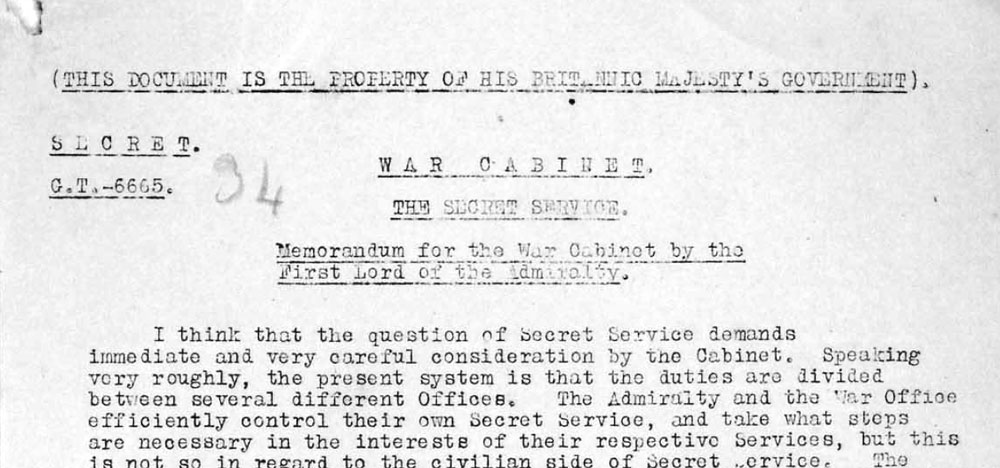
January 17th 1919 – A warrant is served in Wakefield for the arrest of James Cullen of the 3rd Battalion Argyll & Sutherland Highlanders. His commanding officer claims that Cullen has been demobilized in error. Cullen was sentenced to one year’s imprisonment in October 1917 for his role in the Etaples Mutiny (verified in by service records). The sentence in Etaples was suspended in light of the Passchendaele offensive. Instead of one year’s detention he is sent to the front. Cullen goes on to be a founding member of the Communist Party of Great Britain (1920), playing an organising role in the Hunger marches from Glasgow to London alongside Harry McShane as part of the National Unemployed Workers’ Movement. Cullen’s service record (beginning just months before the Etaples Mutiny) is marked by repeated absences and acts of insubordination (see James Cullen, b.1891, Service No. S/20838, Wo 363 – First World War Service Records ‘Burnt Documents’)
January 24th 1919 – The British Government’s Secret Service Committee is founded on the recommendations of a memorandum circulated by Sir Walter Long over concerns that recently demobilized soldiers are vulnerable to revolutionary propaganda being distributed by British and Russian Bolsheviks and the Irish Republican Brotherhood (Feinians) The overlap between civil and military matters is thought never to have been greater, and intelligence from Long’s ‘correspondent in Glasgow’ indicated that a ‘revolutionary movement’ was gaining ground. Long firmly believed that ‘elements of unrest, and what we call Bolshevism’ were more ‘general’ and ‘deep-seated’ that many had assumed. To avoid the trouble experienced by other countries during the process of demobilization, sound and immediate employment should be provided to discharged men. The First Secret Service Committee consists of Lord Curzon (Chairman), Sir Walter Long (Admiralty), Mr Edward Shortt (Home Office), Lord Peel (War Office) and Mr Macpherson (Irish Office)
Source: Security Service Organisation, 1918-1939 Reports of the Secret Service Committee, File KV4/151, National Archives).
January 31st 1919 – The Battle of George Square, Glasgow. A mass protest of around 60,000 men is mobilised by the Scottish TUC and Clyde Workers’ Committee to highlight plight of mass unemployment among recently demobilized servicemen. It gets labelled a ‘Bolshevik uprising’ (The George Square Massacre, Woman’s Dreadnought 15 February 1919, p.8).
January 31st 1919 – The British Labour Party renews attempts to award a mass amnesty to servicemen convicted of mutiny, desertion and other crimes during the war.
18th February 1919 – Etaples Mutineer, James Cullen is arrested in Wakefield. In a deeply ironic twist, Cullen’s case is taken up by Wilfrid Ashley MP and the Comrades of the Great War.
20th February 1919 – Actor Eric H Albury is discharged. He immediately embarks on a tour with Frank Curzon and Gerald de Maurier before landing a contract with movie producers, Stoll Pictures.
10th April 1919 – Alfred Baldwin Raper MP asks the Minister of Labour if he is going to take immediate steps to deal with the serious question of unemployment among ex-Service men.
4th March 1919 – Colonel Wilfrid Ashley MP addresses Cullen’s case in parliament, asking the Secretary of State for War, Winston Churchill to intervene. Cullen, who had been sentenced to one year’s detention for sedition at Etaples, had been demobilized in error and recalled to the colours. Cullen later admits to having distributed Bolshevik literature during the rioting at Etaples (Arrested as a Rebel, Glasgow Weekly Herald, Feb 19th, p.4).
See: Demobilized man arrested as absentee, House of Commons:
https://api.parliament.uk/historic-hansard/commons/1919/mar/04/demobilised-man-arrested-as-absentee
4th – 5th March 1919 – Serious rioting breaks out at Kinmel Camp in Rhyl. Five men die in the disturbances and over seventy men are injured. The mutiny is alleged to have started when a party of about 400 men carrying Red Flags made attempts to storm the guard-room. The leaders were overcome by Officers and placed in detention. Shots were then fired, killing Private Gillen. Further shots were exchanged and the crowd grew increasingly violent. The ammunition used appears to have come from rounds brought back as ‘souvenirs’. According to Brigadier General Colquhoun, one man who tried to raise a Red Flag, William Tarasevich , was shot (The Kinmel Riot, The Times, March 21, 1919, p.17). Practically all the men who faced court-martial were acquitted. Despite the appalling conditions at the camp, the blame was heaped on Bolshevism. Protesters Corporal Joseph Young, Sapper William Tarasevich aka ‘Taranko’ (of unknown National status but born in Russia), Jack Hickman and Gunner William Lyie Haney died during the fighting. Bert Morrison was also tried.
March 1919 – Special Branch report signs of co-operation between The Sailors, Soldiers and Airmen’s Union and extreme Labour organisations.
17th March 1919 – ‘Man in Chains’, Arthur Henry Wagstaff (b.1882) is discharged from the Royal Garrison Artillery after 5 years service. In December 15th Birmingham’s Evening Dispatch reports that having been wounded in Gallipoli, Wagstaff and his unit were sent a telegram by Queen Alexandra of Denmark (daughter of Queen Victoria) expressing her good wishes to him and his comrades, and the best of luck with a concert. The concert was a fundraising event organized by Wagstaff on behalf of the Red Cross and featured ‘such popular artists’ as ‘Water Rat’ Harry Tate and Hetty King (London Music Hall). According to the report Wagstaff’s wife, ‘Gerty Edendale’ was well-known in stage-land (Alexandra Theatre) and organised entertainments for wounded soldiers (Handsworth Hero, Evening Despatch 21 December 1915, p.5). His address at that time Wagstaff enlisted was 1 Kemble Street, Drury Lane in Kingsway. The fact that this is in London’s West End Theatre district makes it plausible that Wagstaff or his wife were jobbing actors or stage-hands at the time. He is listed as living with his wife, Gertrude Berington Wagstaff (nee Smith) at this time. His service record, however, shows a career punctuated by regular periods of absenteeism, insubordination as well as several escapes from detention (punishments awarded included Field Punishment No.1). In November 1901, Wagstaff had faced criminal charges of false pretences in Staffordshire (Lichfield Mercury 15 November 1901, p.8).
30th March 1919 – First reading of Edward Shortts’s Alien Restrictions (Amendment) Bill is heard in parliament. A third clause in the bill deals directly with aliens in Britain causing disaffection or unrest in industry and among troops. Horatio Bottomley withdraws support on the basis that the bill does not go far enough in dealing with immigration.
April 1919 – Head of Britain’s Directorate of Intelligence (counter-subversion) at the Home Office, Sir Basil Thomson unearths a conspiracy to induce soldiers enlisted under the ‘Derby Scheme’ to demobilise themselves on May 11th. They were to strip off their badges and march out of barracks. Former assistant Adjutant-General at the War Office, Cecil L’Estrange Malone and the Sailors, Soldiers and Airmen’s Union are believed to have played central organising roles (Queer People, Sir Basil Thomson, 1922, p.278). The Union’s address at 2 Gough Square, Fleet Street suggested connections to the editorial offices of George Lansbury’s Daily Herald (Manchester Evening News, 09 May 1919, p.5).
May 13th 1919 – Lansbury’s Daily Herald publishes Churchill’s Secret Memo dated January 14th in full (Trade Unionism and the Army, Daily Herald, May 13 1919)
June 1919 – Race riots in Glasgow, Liverpool, Newport and Cardiff. Frustration among ex-servicemen that ‘migrants’ were taking their jobs. Tensions were stoked by both the hard-left, the hard-right and various Seamen’s Unions. Parallel riots took place in Chicago.
June 17-20th 1919 – Further mutinies break out at Wiltshire’s Whitely camp and Epsom Camp. 400 At the latter 400 Canadian Soldiers riot. One policeman is killed. Scotland Yard assumed control of the case. Like the riots at Etaples and Kinmel it started with efforts to release men in detention. Blacksmith and miner Allan McMaster, 30, was charged as a ringleader. Station master Thomas Green was killed. Researcher Martin Knight later alleged that Winston Churchill intervened to minimize the sentences, pardon those accused and have the whole thing played down, possibly to avoid escalating tensions.
June 30th 1919 – Alfred Baldwin Raper MP asks the Minister of Labour when his department will publish a black list of firms who have failed to keep their promises to ex-Service employees.
August 11th 1919 – Alleged Etaples Mutineer Percy Toplis re-enlists under his own name in the Royal Army Service Corps at Whitehall in London (Service no. EMT 54262). Although based at Bulford Camp, during regular periods of absenteeism he takes up additional lodgings at The Strand Hotel in London. His idle talk about opening a movie-theatre and his prodigious acting talents make it possible for him to have fallen into the orbit of men like Maundy Gregory and London’s theatre-set. Press reports at the time of the manhunt claim that The Strand was his favourite haunt. The monocle he takes to wearing in the last year of his life is an affectation repeated by Gregory. Toplis had pawned a monocle in 1920 and the monocle’s case bore an inscription to man in Monte Carlo – a popular gambling haunt for Gregory and Gregory’s friend, the arms dealer, Sir Basil Zaharoff.
August 2nd 1919 – Major Police Strike. Hooligans take advantage of wild strikes in Liverpool, London and Birmingham with widespread looting. Home Secretary, Edward Shortt and other members of parliament regard the officers’ actions as one of ‘mutiny’ (House of Commons, Police Strike, Home Secretary’s Statement, 04 August 1919, Hansard)
August 8th 1919 – British Police learn from Aksel Zachariassen, arrested in Camberwell, London in June 1919 for acting as courier to the Bolsheviks, that an emissary is in the UK with plans for a mass strike devised by Russia for May Day 1920. Zachariassen was alleged to have been carrying £6000 for Worker’s Dreadnought editor, Sylvia Pankhurst (Traitor’s Within, Herbert T. Fitch, Hurst & Blackett, Ltd., 1933, p.83/ Dundee Evening Telegraph 08 August 1919, p.1). The Bolshevik messengers are said to have among them, members of the British Army taken prisoner during the allied intervention during the Russian Civil War. It’s alleged these soldiers they had been enrolled into ‘propaganda schools’ and coerced into supporting revolutionary activities in Britain, scheduled for 1920 (Bolshevist Gold: Attempt to Suborn A Sergeant, Manchester Evening News 08 August 1919, p.5). Britain’s North Russia Expeditionary Force were, by and large, a ramshackle army of undesirables and volunteers, variously under-equipped or trained for war in this kind of climate or terrain.
23rd August 1919 – 300 men of the Warwickshire and Gloucestershire Regiments refused to board at Southampton for service in Russia. The ringleaders of the protest are reported to have told a gathering crowd that the War Office had assured the public that the forces mustered against Russia’s Bolsheviks would be composed only of ‘volunteers’. The men are rounded up by the Sussex Regiment using fixed bayonets. Churchill’s statement that the troops were intended for Turkey was a misleading statement as allied intervention in Russia focused on providing support to Russia’s ‘White South’ which bordered Turkey. Turkey’s Mustafa Kemal was at this time seeking support from the Bolsheviks to overthrow allied occupation (Arrest of 300 Soldiers, Daily Herald 23 August 1919, p.1)
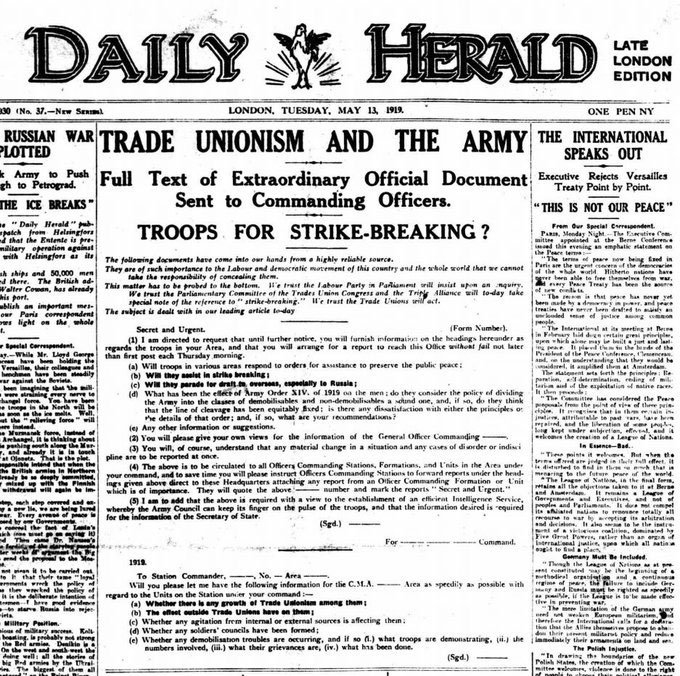
September 1919 – In response to Sir Edward Troup’s request for an Intelligence and propaganda arm in Film and Theatre industry, Alfred Baldwin Raper – Conservative MP, Air Force Officer and friend of Sidney Reilly ‘Ace of Spies’ – forms the multi-million pound, all-British producing movie company, Alliance Film Corporation Ltd. Another director on the board is Eric H. Albury’s current acting partner, Gerald de Maurier (The Bioscope 25 September 1919, p.20). According to press releases of the period, the object of the company is to ‘ensure that a fair share of the world’s film trade shall come to this country’ (Daily Herald 18 September 1919, p.2). Theatre impresario and soon to be elected Conservative MP, Sir Abraham Walter de Frece was brought in as Chairman.
10 Sherwood Street – Albury and Wagstaff
Sept-October 1919 – The recently demobilized Eric H. Albury of Stoll Pictures and the Actors Association takes a room at 10 Sherwood Street in the West End theatre district of London. The very same address appears in Arthur H. Wagstaff’s Service Records (the records include letters to and from Wagstaff at 10 Sherwood Street, Piccadilly). It is from 10 Sherwood Street that Wagstaff sets-off to petition Prime Minister Lloyd George on October 15th. The flat is also within minutes of Victor Grayson on Bury Street. Albury’s 10 Sherwood Street address appears in both the Filmlexicon (1932) and in a publicity ad for his film for Stoll Pictures, The Yellow Claw of 1921. Interestingly, the founder of Stoll Pictures, Australian, Sir Oswald Stoll had also set-up a Fulham-based charity to help rehabilitate war veterans (see the Combat Veteran Players and the Oswald Stoll Foundation). The Yellow Claw was written by Sax Rohmer and directed by Soviet-phile, René Plaissetty of Chicago.
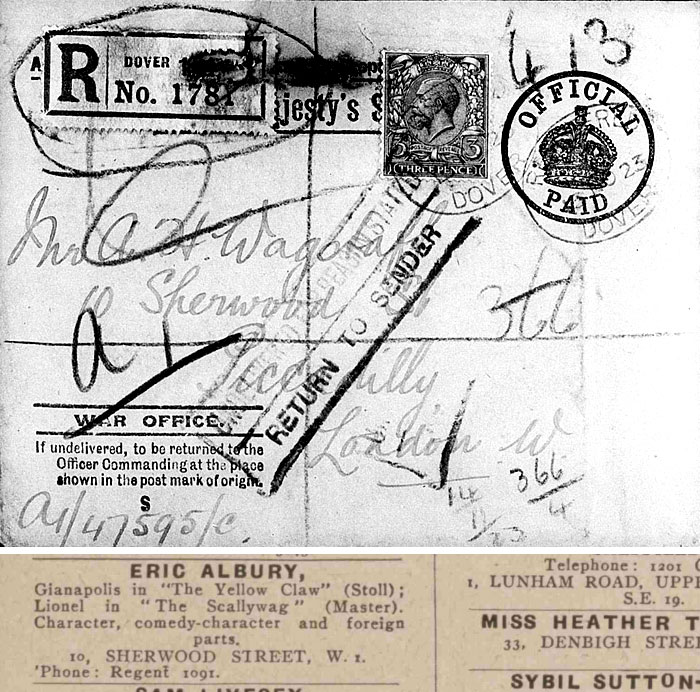
At the time that Albury resided at 10 Sherwood Street, he was still very active in several industry unions. One of those was the Actors Day Fund. The fund’s founder was social reformer, journalist and dramatist George R Sims. In a macabre twist, Harry Reeve – the boxer and camp policeman responsible for triggering the Etaples Mutiny when he shot unarmed Gordon Highlander, Corporal Wood – was the nephew of music hall actor, Charles Reeve (real name Charles Isaacs). Reeve was acting in George R Sims’ Golden Ladder at Whitechapel’s Pavilion Theatre on the night that Ripper victims, Elizabeth Stride and Catherine Eddowes were murdered (The Era 22 September 1888, p.24, column 4, The Era 29 September 1888, p.12, column 2). The killings took place in the yard of the International Working Men’s Educational Club on Berner Street, a venue synonymous with Russian Anarchism. Reeve was also in the Whitechapel Vigilance Committee, formed specially in response to the Ripper murders. His daughter was soldiers’ sweetheart, the actress, Ada Reeve.
In January 1914 Albury and Arthur Rose (a close friend of Victor Grayson and his wife Ruth Norreys) founded the Actors Pay-Per-Play League, an offshoot of the Actors Associated, and headquartered at their 32 Regent Street office (The Era, 21 January 1914). Like Victor Grayson, Rose had been a loyal and active reader and contributor to Robert Blatchford’s radical newspaper, The Clarion. The paper’s co-founder was another theatre-man: Alexander M. Thomspon – a prolific traveller and writer whose cycling, rambling and drama clubs became the lifeblood of British Labour during the early to mid-1900s.
Another man on board at the Actors Day Fund was Dublin born, William.G Fay. Fay, like The Yellow Claw’s screenwriter, Sax Rohmer (writing under his real name, Arthur Henry Sarsfield Ward) were close associates of Irish-Revolutionary Maud Gonne, who had helped support Potemkin mutineer Ivan Beshoff during his exile from Russia in Ireland. Gonne and Rohmer are both alleged to have been members of the legendary, quasi qabbalistic, Hermetic Order of the Golden Dawn. Like Albury Rohmer had served as a civil servant before entering the theatre, and like Arthur Henry Wagstaff, whose Christian names he shared, he was born in Birmingham in the West Midlands. Tellingly perhaps, given both men’s concerns over immigrant ‘invasion’, Birmingham’s Handsworth, like Limehouse, was becoming the centre of immigration.
Albury’s previous employer, Frank Allen of Moss Empires Ltd (who subsidized Liverpool’s Soldiers and Sailors Club during the war) sat on the same charity committees as his star attraction, Ada Reeve – cousin of Etaples Mutiny veteran, Harry Reeve. When the war had finished, and a charge of manslaughter had all but finished his British boxing career, Harry Reeve’s German-American boxing promoter, Dr Louis Meyer, landed him a job in Germany’s blossoming movie industry (Daily Herald, 12 March 1924).Albury seems to have managed to combine his job as actor and civil servant for the Cape Colonies, because he can still be seen shuttling between London and South Africa well into the 1920s.
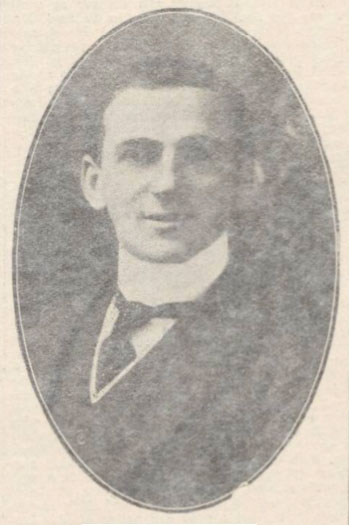
On the July 1st 1926, Albury (travelling under his birth name Henry Rothenburg) accompanies mining adviser to the High Commissioner of South Africa, John Hay-White on the P&O cruiser, Balranald to the Cape.
There’s another curiosity here. One of Albury’s fellow passengers during this trip is Tomintoul farmer, Peter Lindsay, and his reason for being on that trip may not be unrelated. Joubert Brunt of the High Commissioner’s Office had offered a touring study of South Africa to 100 British farmers. Peter Lindsay appears to have been one of those farmers selected. What makes it all the more intriguing that Lindsay was from the very same farming and forestry estate in Delnabo that provided several weeks of work to Toplis during his month long escape to the Highlands.
The owner of the gamekeeper’s lodge might also be someone known to Albury; Charles Gordon-Lennox, the 8th Duke of Richmond owned substantial estates in Moray, and been a regular face at Albury’s High Commission in the Cape at the time that Albury worked there.
Was Lindsay’s trip to the Cape in lieu of services rendered some six years earlier? Could both men have been wartime acquaintances of Albury? Either way, the proximity of Lindsay’s family farm at Delavorar in Tomintoul and the Gamekeeper’s Lodge that Toplis occupied during the famous manhunt is frankly astonishing.
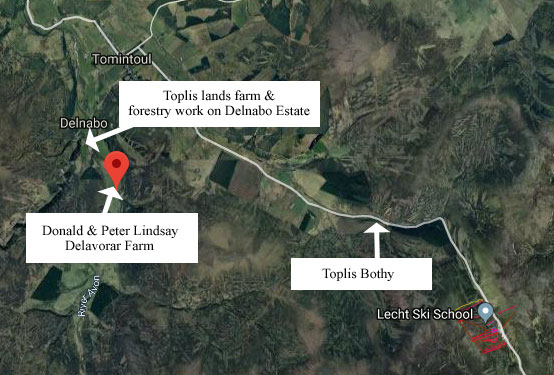
One more thing; a quick look at the 1939 census reveals that Albury was living practically back-to-back with the aunts of Percy Toplis in Kensington. His Aunt Ruth Webster, a former headmistress in Newport, and her sister, Annie can be found living at 62 Avonmore Road, and Albury at 22 Matheson Street. Toplis spent the first 15 years of life living with his aunts between Newport and Stanton Hill near Alfreton.
October 15th 1919 – Arthur Henry Wagstaff, clad in 14ft chains, sets off from Sherwood Street in the West End Theatre district of London and petitions Prime Minister Lloyd George at Downing Street. The expression he uses in the speech he gives (‘the Goliath of the Capitalists’) carries significant weight in Socialist Revolutionary circles. George Lansbury’s Daily Herald, Tom Quelch’s Justice Newspaper, the Social Democratic Federation and Marxists like Mikhail P. Pavlovich (Labour Publishing Company) had all used this exact phrase (and its variant, ‘the Goliath of Capital’) during this period (see Justice, 16 March 1922, 27 May 1915). The phrase was also used by the Huddersfield Examiner in reference to the Liberal Party (it was usually in the context that Goliath’s ‘David’ represented Labour). The expression also strongly echoes the kind of pulpit rhetoric used in the speeches of Huddersfield MP Victor Grayson.
Significantly, The ‘Man in Chains’ metaphor also appeared during Grayson’s blistering 1907 election campaign in the Colne Valley: “Sever the chains that bind you/Hunger shall be no more/Vote, vote for Grayson/And he’ll vote for you! It was a metaphor that Grayson would repeat in years to come (also see: Daily Herald, 20 January 1913, p.10/ Grayson addressing Merchant Seaman’s League, Nottingham Evening Post 04 February 1918, p.3)
The metaphor has its roots in a phrase lifted from Marx and Engel’s Communist Manifesto (1848): “You have the world to win, and only your chains to lose”. The phrase was recycled in Victor Grayson’s 1907 election material (see Harry Taylor’s Victor Grayson archive)
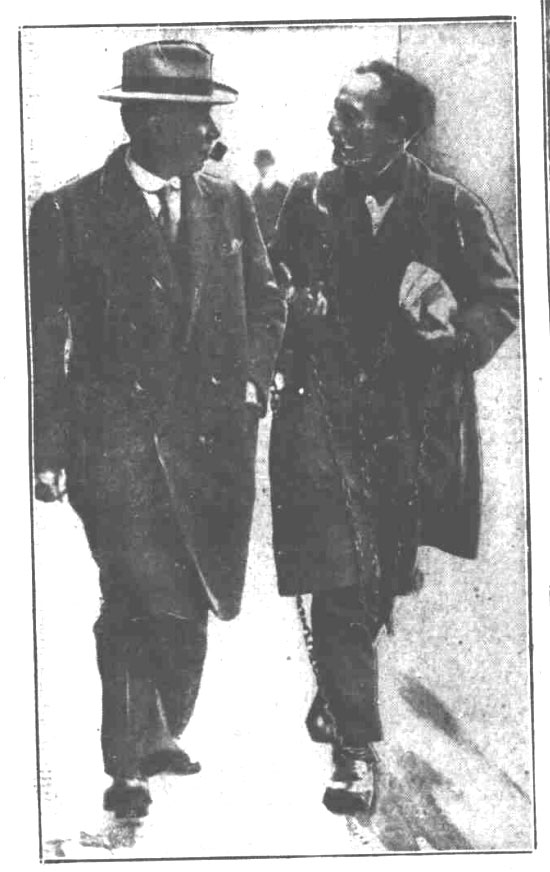
November 9th 1919 – Victor Grayson’s Liverpool and Belfast ‘mutiny’ ally, Jim Larkin is arrested in New York on charges of Criminal Anarchy. During his time in the US the Irish Labour Leader had joined the Socialist Party of America before being expelled for contact with the Soviets. His arrest coincided with raids on the headquarters of the Russian Soviet (Red Plot in America, Leeds Mercury 10 November 1919, p.1)
3rd November 1919 – Colonel Wedgewood asks the Secretary of State for War, Winston Churchill if mercy be exercised in the case of Samuel Adelson and fifty-three other Jewish American soldiers of the Britain’s 38th and 39th Royal Fusiliers charged with mutiny in Palestine in December 1918 (Mutiny Court-Martial (Palestine), 03 November 1919, Volume 120). The disturbances arose from issues of demobilisation and to the treatment of the men in the battalion.
December 1919 – Grayson makes one of his last public addresses at a Trades Union Congress in Glasgow
December 4th 1919 – Wagstaff interrupts a Coalition Meeting at the Corn Exchange on Bedford addressed by Sir Walter Long, key member of the British Admiralty and the newly founded Secret Intelligence Committee.
23 Dec 1919 – 1919 Aliens Restriction (Amendment) Act is passed. The 1919 Aliens Restriction Act continued the restrictions placed on ‘enemy aliens’ in war time into peace-time. The act made it illegal for aliens to promote industrial action or sedition (mutiny) among British troops (especially Bolshevism). Further restrictions were made on employment of immigrants in the marine profession and alien activity in shares and company registrations.
December 26th 1919 – Percy Toplis is alleged to have stolen a Sunbeam car belonging to Secretary of War Winston Churchill at Bulford Camp. He deserts for the second (at least) time (Confederate of Toplis, Globe 04 May 1920, p.1)
January-April 1920 – Serial deserter and alleged ringleader of the Etaples Mutiny, Percy Toplis is back in London at the Strand Palace Hotel, travelling occasionally to Bath, Bristol and Swansea (Toplis Sweetheart, West Briton, June 14th 1920, p.2). His stay at the Strand Palace hotel is interesting. According to press reports of the time he was a well-known figure in London’s West End Theatre district where he would pose as a man of means and officer (Sheffield Evening Telegraph 29 April 1920, p.5). In press interviews Percy’s mother Rejoice Toplis recalled how Percy, as a boy in Mansfield, had been briefly recruited by a touring theatre company. Scotland Yard also described Toplis as a ‘wizard at disguises and had seldom had to deal with a man so capable of changing his appearance so wonderfully’. From a young age Toplis had had a passion for reading detective stories and on occasions had attempted to emulate their adventures and disguises (Wizard at Disguises, Taunton Courier, and Western Advertiser 05 May 1920, p.1).
January 21st 1920 – Assistance Chief Commissioner of Dublin Metropolitan Police, R.T.C Redmond is shot and killed on a street on which the Sinn Fein HQ is based.
January 24th 1920 – Sir Neville McCready Police Commissioner (and former Senior British Army officer in Ireland) makes a statement that the violent use of firearms is on the increase. He cites the training of men in the use of firearms during the war as the single greatest cause. The crisis has been escalated by the threat of revolutionary Bolshevism and an increase attacks by Sinn Fein. As a response, the Home Office considers additional restrictions on firearms. Debate quickly turns to the issue of arming Police officers.
January 24th 1920 – Sinn Fein paramilitary members attack Police Barracks in Cork, Ireland.
05th February 1920 – Etaples hero and Victor Grayson visitor, Horatio Bottomley tells readers in John Bull that soldiers were treated like slaves during the war, losing all civil and natural rights, merely for the ‘crime’ of serving his country. Bottomley writes, “The men who have suffered have come home, and they have been quietly and mercilessly been sent to the same fate as the Crimean veteran.” He uses the example of an officer court-martialed and executed for losing his nerve in battle.
12th February 1920 – Man in Chains, Arthur Henry Wagstaff is arrested in Paisley shortly after petitioning Lord Asquith with a series of demands that includes extra gratuities for all ex-servicemen, fuller pensions for the disabled the immediate discharge for individuals convicted of mutinous offences during the war.
16th February 1920 – Sinn Fein attack on Ballytrain (County Monaghan) police barracks with explosives.
17th February 1920 – Edward Shorrt, the Secretary of State for the Home Department (and member of the newly established Secret Service Committee) tells the House of Commons that he hopes ‘to shortly to introduce a Bill for ensuring the more effective control over the possession and carrying of firearms’ (Crime Detection debate, 17 February 1920, Volume 125, Hansard)
24th February 1920 – A petition is submitted to Parliament for the release of Calais Mutineer, Private Samuel Philip Pritchard of the King’s Shropshire Light Infantry. It comes at the same time that the British Labour Party renews its demand for a mass amnesty for mutineers and deserters
28th February 1920 — Horatio Bottomley’s friend and Assistant Editor of John Bull, Charles Palmer is elected MP for The Wrekin in Shropshire. Palmer co-founded the People’s Party and the right-wing, anti-coalition Independent Parliamentary Group in a fresh attempt to remove Lloyd George. Palmer also represented The Actors Association during his brief time as MP in the House of Commons. This would have brought Palmer into contact with both Eric H. Albury and Arthur Rose (Grayson’s best man) who both sat as members of Actors Association council at this time. Palmer died suddenly in October 1920, just weeks after Victor Grayson disappeared.
March 4th 1920 – ‘Bolshevik Plot Unmasked’ in the US. Documents are brought before a Senate Committee in the US providing evidence of a Bolshevik plot to ignite a Revolution. A courier is found with diamonds to the value of three million rubles with instructions to arm demobilized servicemen. British Police are told to search for an emissary from Russia who is in Britain with plans from Lenin to launch a Great Strike in May (Pall Mall Gazette 04 March 1920, p.3).
March 22nd 1920 – Winston Churchill vigorously defends his decision not to award the mass amnesty to army offenders demanded by the likes of Govan (Glasgow) MP Neil Maclean in November 1919. Churchill’s defence consists of the following:
“A general sweeping amnesty would have been absurd. A number of these men are in penal servitude for murder, others for gross civil offences of a most terrible character, others for military offences of a very grievous character—such as desertion to the enemy, mutiny with violence, threatening to kill superior officers, and desertion in the sense, not of a man being absent a certain time and then being apprehended after he had shown no intention of quitting the service finally, or of a man deserting from one corps and going into another, but men who laid low at different base ports, hiding from place to place and living by thieving and under very disreputable circumstances month after month while their comrades were being shot down on the fighting fronts. Such are the cases, but how many of them are there? The total number was 171 men in penal servitude last year, and 22 others were sent to penal servitude since the War ended.”
Number of Land Forces debate, House of Commons, 22 March 1920, Volume 127, Hansard
Curiously, Churchill’s depiction of the typical offender bears an uncanny resemblance of Edwin Woodhall’s account of Percy Toplis as a ‘military Ishmael’ – a serial deserter who lies low in the deserters camps around Le Havre, thieving off locals and deserting one corps only to reenlist in another (Detective and Secret Service Days, Edwin T Woodhall, Jarrolds, 1927). Woodhall was at one time on Churchill’s personal security detail. Within four weeks of making this address, Toplis would go on the run.
March 22nd 1920 – Percy Toplis, recently detached from the RASC, re-enlists as Air Mechanic with the RAF at Halton base in Wendover (service no.340978). At the time of his death he is carrying a railway ticket marked Aberdeen to Wendover, and a driving licence issued in the Wendover area to a John Henry Thompson (is this the same Major John Henry Thompson of the RAF who married music hall star ‘Millie Lindon’?) 3
March 23rd 1920 – Cecil John L’Estrange Malone asks the Under Secretary of State for the Home Office, John Baird if the recently reorganized Secret Intelligence Services under Basil Thomson is a ‘secret police force’ along the lines of the Cheka and Okhrana (Secret Police Organisation, 23 March 1920, Volume 127, Hansard). Penrith Police would communicate with Baird and his superior, Edward Shortt at the time of the ambush on Toplis.
April 13th 1920 – An exhaustive search is made on the premises of Alexander Findlater in Dublin, for ammunition, explosives and firearms.
April 27th 1920 – Sinn Fein paramilitary attack police and military barracks in Wexford, Dublin.
April 28th 1920 – Toplis is sought in connection with the murder of Andover and Salisbury taxi-driver, Sidney George Spicer. The press reports seldom fail to mention that Toplis is rarely seen without a revolver. The headlines also read that outlawed ‘Dum Dum’ bullets (hollow-point bullets) are used in the execution (Dum Dum Bullet in Motor Car, 28 April 1920 – Pall Mall Gazette, p.1). The news followed reports in March that German Communists had been found to be using Dum Dum bullets in Berlin and were being used in attacks on Police by Sinn Fein (these modified bullets also featured in the infamous ‘Sidney Street Siege’ of January 1911 in the East End of London: see Traitors Within, Herbert T. Fitch, Hurst & Blackett, Ltd., 1933, p.44)
April 29th 1920 – A new Firearms Bill is formally proposed by Secretary of State for the Home Office (and Secret Service Committee member) Edward Shorrt and discussed in the House of Commons (Firearms Bill Hl, 29 April 1920, Volume 40, Hansard)
May 1920 – After the intervention of Lord Asquith, Royal Scots Mutineer Charles Douglas (aka. Daniel McCorkindale b.Glasgow, 1890) is released from Portland Prison after serving 3 years of a 15 year sentence for mutiny in France. He had previously been sentenced to death. He had pre-war convictions for offences in Perth, Aberdeen and Edinburgh. He had enlisted in 1914.
May 6th 1920 – Toplis arrives in Tomintoul in the Scottish Highlands. Here he makes use of a gatekeeper’s lodge on the Duke of Richmond’s Game and Fishing Estate at Delnabo, working a logger. It was the death of a Corporal in the Duke’s Gordon Highlanders that sparked the mutiny in Etaples that Toplis became famous for. Is his flight here related to a support network?
May 9th 1920 – Lloyd’s Sunday News report that Scotland Yard are making progress with their investigation into a number of ‘Secret Terrorist Societies‘ infiltrating the higher echelons of British civil society. British Bolshevik emissaries were said to be in London with instructions to carry out criminal acts as part of their operations. The investigation coincides with raids on the offices of Sylvia Pankhurst’s Worker’s Dreadnought, a journal that Special Branch detectives Herbert Fitch and Basil Thomson suspected of having laundered Bolshevik funds in the UK. The Berry Brother’s World’s Pictorial News will run the same report in June 1920, this time featuring Toplis as the anarchist group’s leader, luridly regaling readers with his seduction of society ladies. The newspaper described how the ‘secret and infamous organisation’, operating in the East End of London, were ‘out to destroy the very foundations of ordered life and government’ (World’s Pictorial News, June 12th 1920).
The owners of the Manchester paper, Gomer & William Berry (1st Viscount Camrose) provided financial support to the Churchill family and were close friends of Winston in particular. The paper ran what ranks as the most salacious and ‘exclusive’ three-part serial on Toplis after his death, even going to the extraordinary lengths of producing a fake photograph of Toplis dressed as a monocled dandy and philanderer.

May 11th – May 14th 1920 – Toplis stays for three days at a small Temperance Hotel in central Inverness. According to a witness, Toplis frequents a bar that is ‘popular with members of the theatrical profession’. The man describes him as a ‘modern day Yorrich, capable of infinite jest’. At the hotel he entertains guests at the piano. It’s alleged that his favourites were hymns ‘and the Russian National Anthem.’ (Aberdeen People’s Journal, June 12th 1920). During a trip to nearby Lochrosque he tells a party of businessmen that he is in the area ‘to float a cinema business’. Other witnesses report displays of ‘amazing theatricalism’. Toplis tells guests at the hotel that he has recently been in Russia. Is it possible that Toplis, faced with a six-month stretch in Nottingham, had instead volunteered for the battalion of undesirables dispatched to Russia by Churchill in November 1918? Was he, like Sergeant Price of the Machine Gun Corps (Calvary), captured and prepared by the Bolsheviks to undertake propaganda work as messengers in the UK? It seems unlikely, but its plausible as he still hadn’t been demobilized at the time of his arrest in Nottingham (see: Bolshevist Gold: Attempt to Suborn A Sergeant, Manchester Evening News 08 August 1919, p.5)
May 13th 1920 – Armed and masked Sinn Fein members raid Income Tax Offices in Belfast.
May 22nd 1920 – Harold Percy Burgess, manager of Sylvia Pankhurst’s Workers Dreadnought journal, and a former private in New Zealand’s Auckland Infantry is arrested. Meetings between Burgess and Private Joseph Brady of the Irish Guards are said to have taken place in mid-April at one of Toplis’s favourite haunts in London, The Strand. Burgess is charged with attempts to incite a mutiny at Aldershot Barracks (Clutha Leader, New Zealand issue-15, 20th August 1920). The Dreadnought published the very first account of the Etaples Mutiny on November 3rd 1917 (Soviet Pamphlets, The Observer, 16 May 1920, p.14)
May 28th 1920 – Toplis narrowly escapes arrest during a gun-fight at the gatekeeper’s lodge in Tomintoul. He flees at midnight to Aberdeen.
June 6th 1920 – Toplis is ambushed and shot dead in Penrith after pulling his revolver on police. Chief Constable Charles Parry made the unprecedented move of issuing firearms to the officers involved and communicates regularly by telegram with Under Secretary to the Head of State for the Home Office, Edward Shorrt before and after the ambush. Edward Shorrt’s deputy, John Baird was good friend of Mi6’s Sir Mansfield Smith-Cumming and was himself, a former member of the Secret Service Bureau. It was Baird who recruited Russian-linguist Samuel Hoare into Mi6 to oversee spying activities in Russia in 1916. Hoare became Head of Britain’s Intelligence Mission in the run-up to the February Revolution. In March 1917 Hoare was posted to Italy.
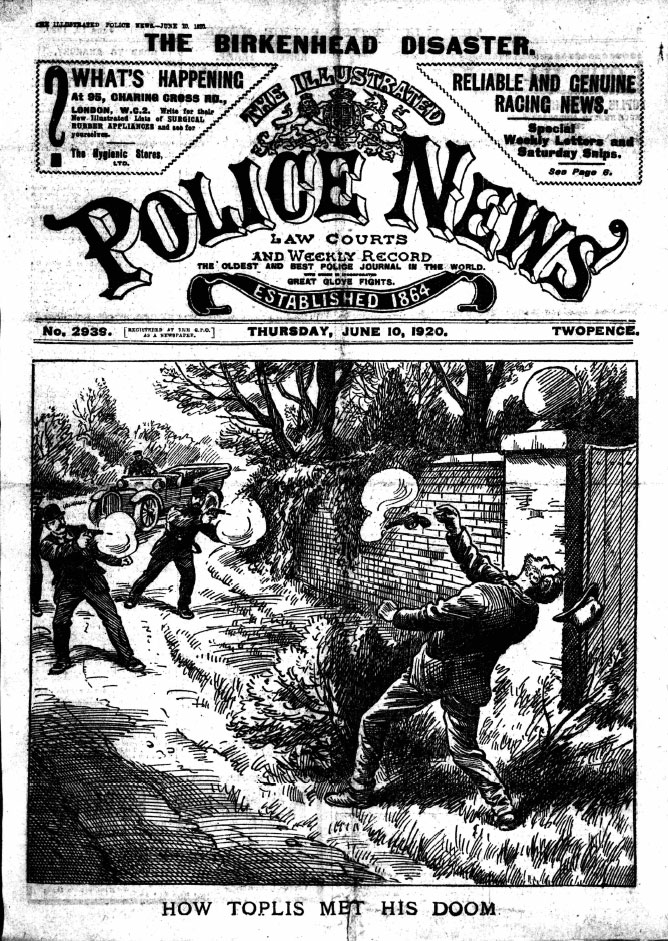
Churchill and the Berry Brothers
June 12th 1920 – Churchill’s friends the Berry Brothers run a 3-part series of articles in the World Pictorial News depicting Toplis as the ringleader of a Bolshevik ‘Free Love’ organisation in London’s East End. He is also depicted as a serial philander and abuser of high-class women in London’s civil society. The elder brother Seymour Berry had previously been recruited by the British Government to handle financial negotiations over the sale of munitions between Britain and America. Churchill was at this time, Secretary of War in Lloyd George’s coalition Government. As Minister of Munitions in 1917, Churchill would have liaised closely with Berry. Interestingly, General Haig’s diary reveals that Churchill was with Haig in France on the day that news reached him of the disturbances at Etaples (roughly a two hour drive away).
The World’s Pictorial News supported their series of articles with a nationwide promotional campaign, a typical newspaper advertisement reading, ‘The Life of Percy Topliss: Amazing Revelations: Topliss as a Fascinator of Women, Army Life: the Terror of his Comrades. The Life Story of Percy Topliss should be read by everyone, because of the strange light in sheds on human nature and because of the warning it gives as to what life can be when men give way to their baser passions’ (Sheffield Evening Telegraph 10 June 1920, p.3).
Interestingly, the Berry family and the family of the man who many believe to have killed Toplis – Norman de Courcy Parry – were major stakeholders in the mines around Newport. It was here that Toplis had spent several years of his youth with his aunt, Ruth Webster. Ruth had served as head of Tredegar Wharf and Bolt Street Girls School between 1905 and 1936. Another man who had lived and worked in the area was Jesse Robert Short, ex-miner and petty criminal, and the only man known to have been executed for mutiny at the Etaples riot. In fact it was South Wales mining companies (that would have included the Berry Brothers and the Parrys) that demanded troops and mounted police officers from British Home Secretary Churchill to help subdue the rioting miners during the strikes of 1910 and 1911 (see The Tonypandy Riots). Winston’s cousin, Cardiff MP Ivor Guest Churchill also had a stake in these mines. Mutineer Jesse Robert Short had been an employee of Mountain Ash Colliery in 1907. The colliery was operated by Llewellyn (Nixon) Ltd and Churchill’s friend Seymour Berry was a major stakeholder. Just a few years before, Chief Inspector de Courcy Parry, the man who ordered the ambush on Toplis on June 6th, had been Superintendent of the same Glamorganshire Police Force brought in to subdue the riots. The strikes had a profound effect on production for the Berry’s Llewellyn (Nixon) & Cambrian Combine Ltd.
June 29th 1920 – Calais Mutineer Private Samuel Philip Pritchard of the King’s Shropshire Light Infantry is released from prison. The death sentence had been imposed shortly after the armistice and had been commuted to life imprisonment. It was subsequently reduced to 7 years penal servitude (Birmingham Daily Gazette 29 June 1920). Churchill had refused his release in February on the grounds that he had been a ‘ringleader of a most serious mutiny’ (Imprisonment For, 25 February 1920, Volume 125, Hansard/ Daily Herald 24 February 1920, p.3). He had enlisted voluntarily in 1916. The Labour Party of West Bromich took up his case. Two other men had been sentenced to death.
July 21st 1920 – The Communist Party of Great Britain is founded from extreme, breakaway factions of the British Socialist Party, the Communist Unity Group of the Socialist Labour Party and the South Wales Socialist Society. Etaples Mutineer James Cullen is among its earliest and active members. ‘Super communist orator’ William Gee, who led the ‘Impossibilists Revolt’ of the early 1900s, made the first of the group’s inaugural addresses in Glasgow. By 1925 the party had over 4,000 members, that number trebling in the 1930s.
16th August 1920 – Just two months after Secretary of State, Edward Shorrt plays a critical role in the ambush on Toplis, his previously unpopular Firearm Bill is passed by Parliament.
September 15th 1920 – Still incarcerated in New York on charges of Criminal Anarchy, Victor Grayson’s friend Jim Larkin issues a demand for the immediate release of Irish hunger striker, Terence MacSwiney.
September 16th 1920 – Anarchists bomb Wall Street in New York. Larkin associates are suspected.
September 24th 1920 – Dum Dum bullets like those used by Toplis are reported to have been used in a Sinn Fein attack on police in Miltown Maybay, Ireland. In the press, the use of Dum Dum bullets, outlawed as inhumane by the Hague Conventions of the late 1800s due to the vicious impact they had on internal organs, were routinely employed by press editors to lend a brutal edge to reports of terrorist activities. They were rarely (if ever) mentioned in simple homicides – not least because they were so difficult to come by. If the press is anything to go by, their use seems to have been confined squarely to Sinn Feiners and revolutionary assassins. Also known as ‘expanding bullets’ and ‘hollow-point’ bullets, the bullets, designed by the British, would expand on impact with the flesh and great bigger, more damaging wounds. They are the bullet traditionally favoured by assassins.
September 25th-30th 1920 – Etaples veteran and former MP Victor Grayson disappears from his flat in London’s West End, never to be seen again. Hotel manageress Hilda Porter is possibly the last person to see him alive. Grayson is alleged to have been investigating the case against Roger Casement at the time he disappeared.

September 27th 1920 – Michael Simington Secretary of the Clapham Branch of the Irish Self Determination League and aligned with the Roger Casement Sinn Fein Club is arrested by Police. It is believed that Simington had been plotting an attack on the offices of Hamar Greenwood, then serving as Chief Secretary for Ireland (Stolen Irish Office Plans, The Manchester Guardian, 22 Oct 1920, p.9).
September 29th 1920 – Reports leak in New York of a foiled attack on the British and Irish Treasury in Whitehall featuring British-based networks loyal to Sinn Fein and the Roger Casement Sinn Fein Club. Attacks were planned in response to the arrest of Terence MacSwiney in August 1920. Plot is rumoured to feature stolen taxi-cabs packed with explosives. Scotland Yard is believed to have learned of the plot two weeks prior (Bonham Daily Favorite, 29 September 1920, p.4, Sinn Fein, Whitehall Invasions, Yorkshire Post and Leeds Intelligencer, 29 September 1920, p.6)
October 1920 – Glasgow jewel thief Charles Douglas (aka. Daniel McCorkindale) who was released from military detention by Asquith in May, is found guilty of robbery and sentenced to three years at Folkestone. McCorkindale had been charged with mutiny in France and sentenced to death (commuted to 15 years detention).
October 22nd 1920 – Irish hunger-striker, Terence MacSwiney dies in police custody in Brixton Prison.
October 25th 1920 – Brixton-based clerk, Michael O’Kelly Simington convicted over the September Whitehall Plot. Simington was a clerk at the Office of Works and tried for wrongfully retaining plans contrary to the Official Secrets Act.
November 29th 1920 – Sinn Fein arsonists launch sustained attack on Liverpool and Manchester. The press regale readers with reports of ‘long-running gun battles’ between arsonists and police. Teachers Sheila Brown and Kathleen Brown, organisers of the Liverpool branch of the Roger Casement Sinn Fein Club, are among those arrested. 36 year old teacher Roisin ni Chillin (Maria Rosina Killen in the press) had been secretary of the club in London. In October 1923 Killen’s relationship with ex-British soldier and trainee teacher, Reginald Dunne, convicted of the murder of Field Marshal Sir Henry Wilson in London the previous year, was investigated by Police. At the time of his death Wilson had been serving as Special Adviser to the Intelligence Department at Scotland Yard. The attacks coincided with a spate of attacks on Police in Cork (Leeds Mercury 30 November 1920, p.1-12)
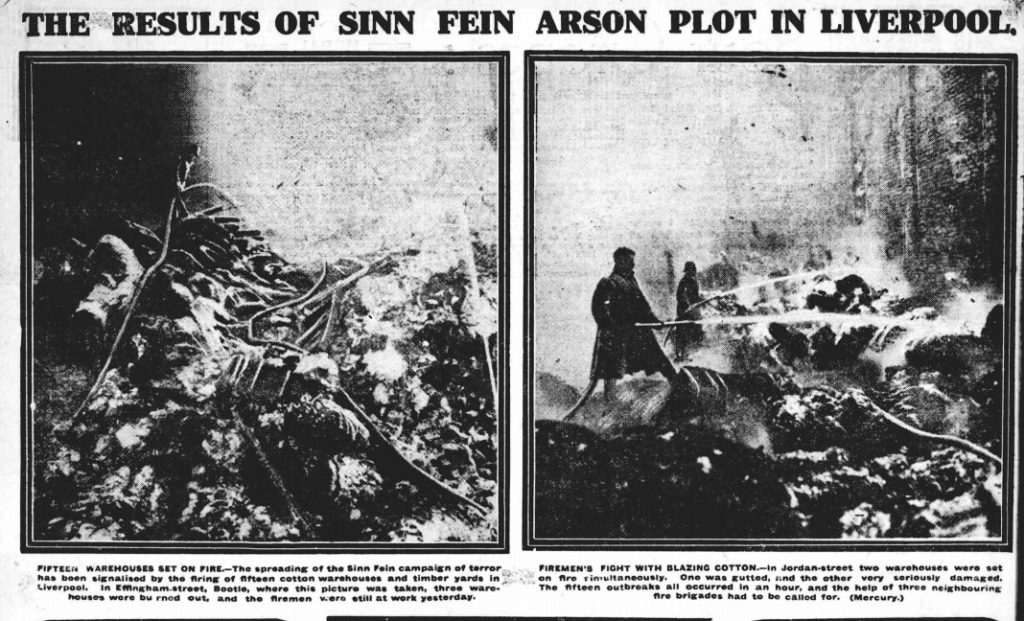
Reconnaissance
March 6th 1922 – One of the world’s first accounts of the Etaples Mutiny of September 1919 is published in the Otago Times in New Zealand. It mentions the part played by Horatio Bottomley in the fruitful negotiations that took place between the Soldiers Councils of Action and Brigadier General Thomson (Otago Daily Times, Issue 18496, 6 March 1922)
May 1922 – Etaples champion and Grayson visitor, Horatio Bottomley is arrested and charged with fraud. He served 5 years and died penniless in 1933.
November 22nd 1922– Former mutineer and fake VC holder, John Muncaster Entwistle is charged and arrested for impersonating a decorated soldier at a political meeting in Cromford, Derbyshire led by the 10th Duke of Devonshire, Edward Cavendish (who he was heckling over the issues pensions). Entwistle had enlisted with the Royal Irish Fusiliers in December 1914, before deserting. He re-enlisted with the 27th Manchesters but was court-martialled and sentenced to three years for Mutiny in France (Sheffield Daily Independent, November 22nd 1922, p.5)
April 2nd 1923 – George Hawkins (b.1895, Newcastle upon Tyne) charged with stealing in Hull. Had previously been sentenced to death for Mutiny in France, commuted to 18 years (Yorkshire Post and Leeds Intelligencer 02 April 1923, p.11). He carried a previous sentence for desertion.
August 1924 – George Jackson (b.1882) charged in London with stealing gold watch. Previous convictions included 10 year sentence for inciting mutiny in France (Lancashire Evening Post 29 August 1924, p.2).
Notes
1 Victor Grayson was the Whitechapel-born, Liverpool-raised MP for the Colne Valley. He also remains the only true Socialist MP to have ever served in the British Parliament (as Independent Labour candidate in 1907). On September 9th 1917 – the very day that the mutiny started – Victor Grayson and his unit marched into Etaples Base Camp. In his 1986 article for the Stand To! journal, Julian Putkowski, the historical adviser on the BBC drama, the Monocled Mutineer, admitted that the character of Charles Strange was a ‘composite of the Labour Radical MP, Victor Grayson’, and the ‘founder member of the British Communist Party, Lieut.-Colonel Cecil L’Estrange Malone MP’ (Stand To! The Journal of the Western Front Association, Winter 1986, No.18, Toplis, Etaples and the Monocled Mutineer).
2 Also curious to note that Victor Grayson’s friend Roger Casement (hanged for alleged collaboration with Germany in August 1916) worked for the British Colonial Service in Africa – like Albury. Both Casement and Fay were close associates of Griffith. Interesting that Maud Gonne’s friend & writing collaborator Arthur Griffith (Gaelic League/Sinn Fein founder) was in South Africa supporting the Boers at the same time as Eric H Albury. Albury’s friends, Sax Rohmer & W.G Fay were very close to Maud who had taken up acting.
3 If Toplis was stationed at RAF Halton in Wendover as the press and police reports allege then it makes its perfectly plausible that he stole (or was loaned) the driver’s licence from a more senior officer at the camp. According to Harry Fallows who was called as witness, Toplis claimed he had been given one month’s leave to go around the country looking to purchase ‘cheap cars’ on behalf of the Air Force (Fallows remarks that he showed him said pass). Toplis also showed Fallows his RASC discharge papers signed by a Captain J.C Jennings dated 28th/12/1919 (Its worth pointing out that a British driver’s licence at this time didn’t feature the licence holder’s picture or date of birth).
Was the John Henry Thompson on the driver’s licence Major John Henry Thompson of the RAF and King’s West African Rifles Regiment? It’s likely we’ll never know,but there’s some evidence to suggest it might be in view of the theatre-links so far.
In 1928, General Major John Henry Thompson married the widowed Lady Florence Hulton, whose deceased husband, the Manchester-born Edward Hulton, 1st Baronet had founded several papers including the Empire News. The Empire News is the paper that recruited Victor Grayson for a press mission in France.
As it happens Lady Hulton was herself a bit of a Toplis, having started life in abject poverty. Her real name was Fanny Warris from Birmingham. During the latter part of the 1800s she became the Music Hall legend, Millie Lindon. Like Toplis, her story was one of truly astonishing social reinvention. In 1938, just ten years after their marriage, Lindon and Thompson divorced. The judge’s impression of Thompson was not good. Major’s ‘mode of life’ he told the court, was ‘aimless and vague and his means of existence entirely precarious’. (Birmingham Daily Gazette 01 April 1938, p5) Needless to say that another ‘aimless and vague character’ with a commission in the RAF was Sidney Reilly ‘Ace of Spies’, whose means of existence was likewise ‘entirely precarious’.
Lindon’s next husband was Baron Otto Sklenar von Schaniel, a Czech landowner.
